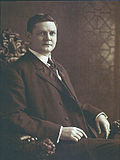Top Qs
Timeline
Chat
Perspective
Louisiana's 6th congressional district
U.S. House district for Louisiana From Wikipedia, the free encyclopedia
Remove ads
Louisiana's 6th congressional district is a congressional district in the U.S. state of Louisiana. The district covers a backslash-shaped region stretching from Shreveport in the northwest of the state, roughly following the Red River of the South and the Mississippi River to the state capital of Baton Rouge, encompassing most of the majority-Black areas in between.
The district is currently represented by Democrat Cleo Fields.
Remove ads
History
Summarize
Perspective
For most of its existence, the 6th congressional district has contained a significant portion of Baton Rouge. Since its creation, its boundaries have migrated from a position astraddle the Mississippi River to completely east of the Mississippi River and more recently astraddle the river again.
For decades prior to 1974, the district was virtually coterminous with the Florida Parishes. In 1972, the district shed St. Tammany Parish to the 1st congressional district, and since then several redistrictings have incrementally moved the district's boundaries westward so that it has shed both Washington and Tangipahoa parishes (including Hammond, home of James H. Morrison, who represented the district for 24 years, the longest tenure of anyone ever to represent the district) to the 1st district.
For most of its existence, the district's lines generally followed parish lines. In the 1990s redistricting, however, most of the district's black voters were transferred to the black-majority 4th district. Those lines, however, were thrown out in 1995 when the 4th was ruled to be an unconstitutional racial gerrymander, and from 1996 to 2013, the 6th included all of Baton Rouge. After the 2010 redistricting, a gash in western Baton Rouge, including most of the city's black precincts, was transferred to the New Orleans–based 2nd district.
Following a court ruling striking down Louisiana's 2022 congressional map for violating the Voting Rights Act, a new map enacted by a special legislative session on January 22, 2024 significantly redrew the 6th. It now stretches from Caddo Parish in the North West to East Baton Rouge Parish, and will include a majority African-American voting-age population. Most of Baton Rouge's whiter and wealthier portions were shifted to the 5th district.
Remove ads
Parishes and communities
For the 119th and successive Congresses (based on the districts drawn following a 2023 court order), the district contains all or portions of the following parishes and communities.[5][6]
Avoyelles Parish (7)
- Bunkie, Cottonport, Evergreen, Mansura (part; also 5th), Moreauville, Plaucheville, Simmesport
Caddo Parish (1)
- Shreveport (part; also 4th)
DeSoto Parish (4)
- Frierson, Gloster (part; also 4th), Mansfield, South Mansfield
- Baker, Baton Rouge (part; also 5th), Brownfields, Gardere, Merrydale, Monticello, Zachary (part; also 5th)
Lafayette Parish (3)
Natchitoches Parish (12)
- All 12 communities
- All five communities
Rapides Parish (8)
- Alexandria (part; also 4th), Ball, Boyce, Cheneyville, Deville, Echo, Lecompte, Pineville
St. Landry Parish (13)
- All 13 communities
- All four communities
Remove ads
Recent election results from statewide races
List of members representing the district
Remove ads
Recent election results
2002
2004
2006
2008
2010
2012
2014
2016
2018
2020
2022
2024
Remove ads
See also
References
Wikiwand - on
Seamless Wikipedia browsing. On steroids.
Remove ads

























